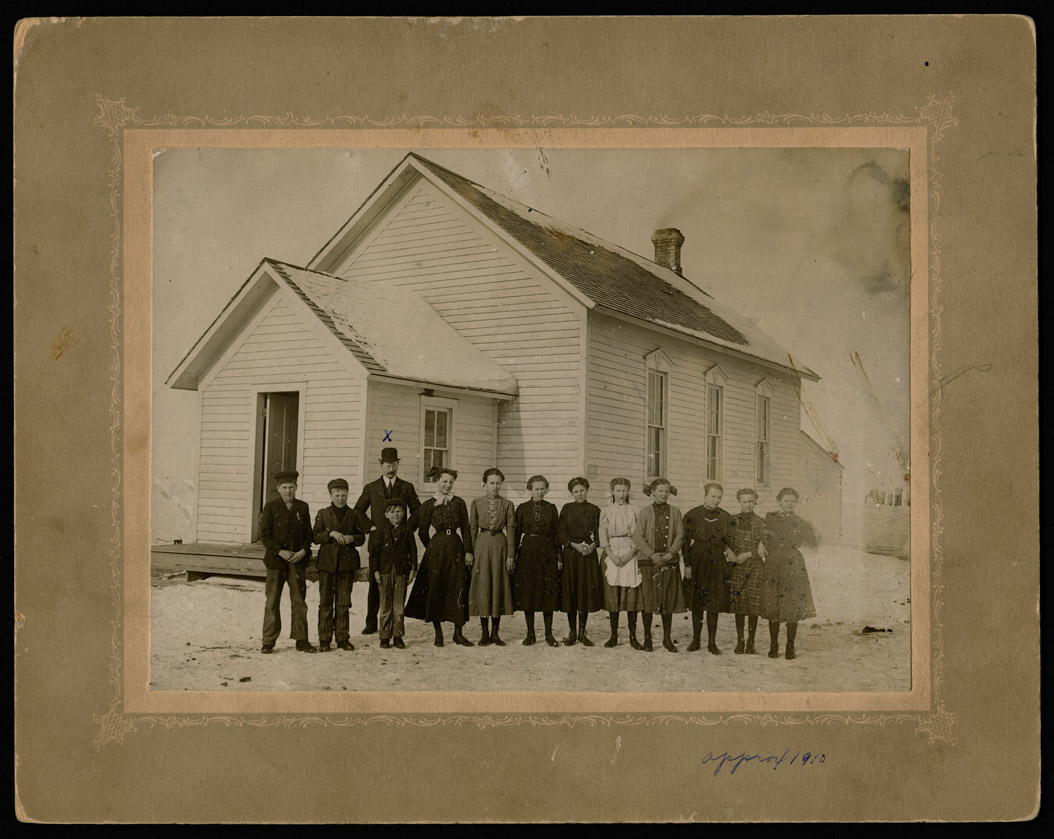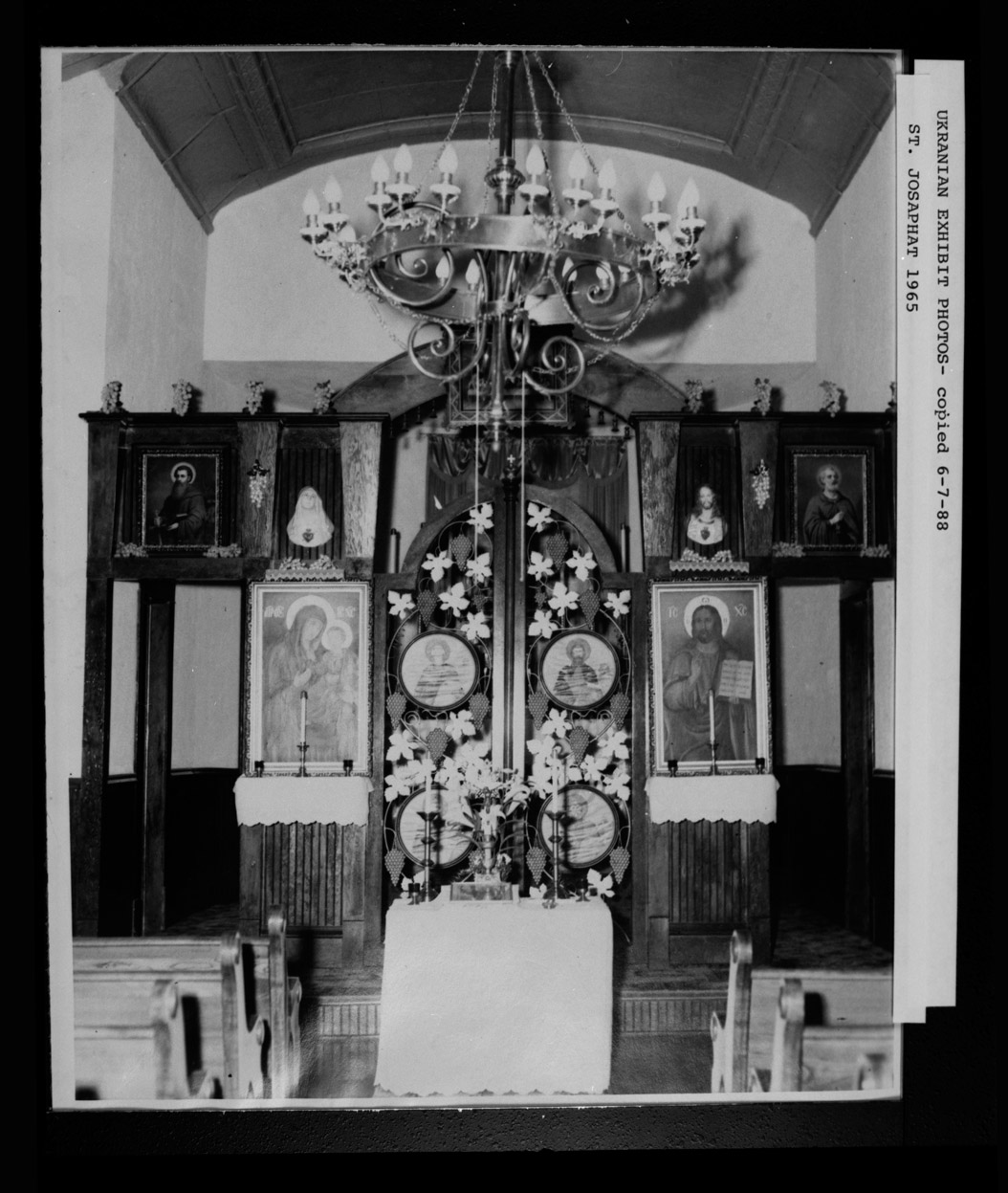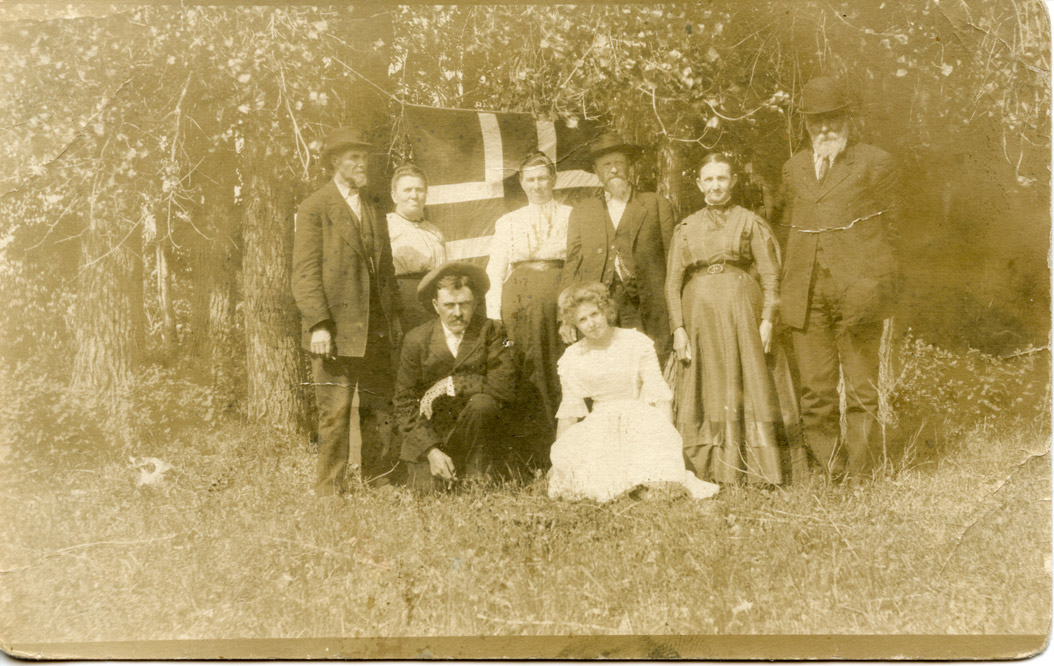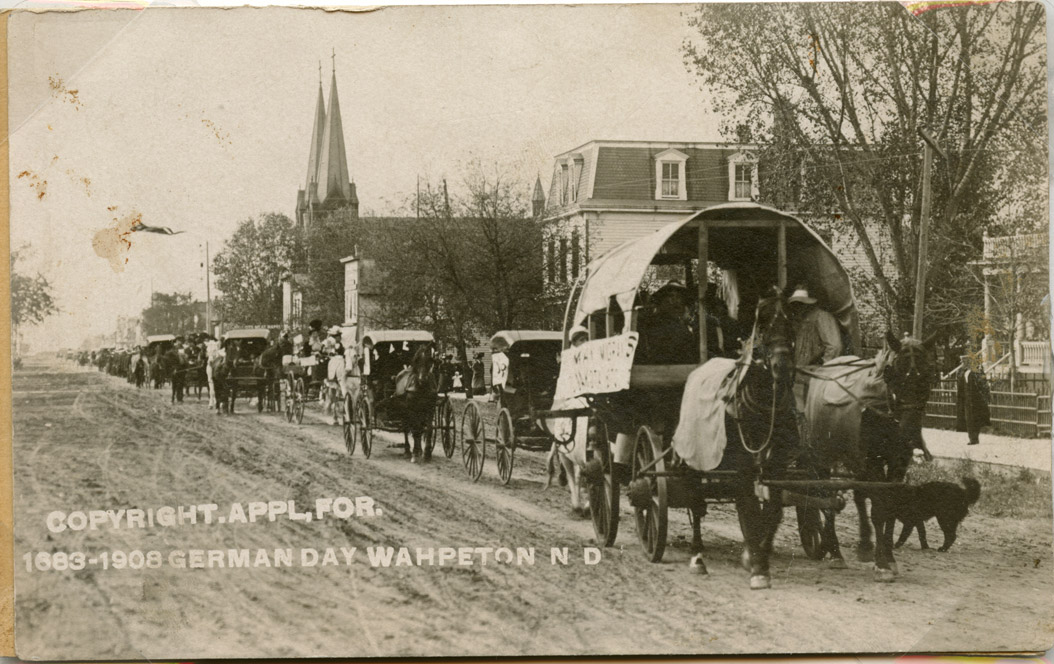Immigrants came to North Dakota for a variety of reasons. However, many immigrants chose to settle near others of their ethnicity. Ethnic communities allowed the residents to maintain their language and other customs.




The children of immigrants attended schools where English was the only language allowed. (See Image 8.) English became the common language of children, no matter what language they spoke at home. As these children grew up, they wanted to attend an English-speaking church. Youth groups led their parents’ churches through the process of buying English hymnals and conducting services in English. For many ethnic churches, the change to English was very difficult. Many people felt that worship would not be the same without their original language. (See Image 9.)
However, children of immigrants did not turn their backs on their parents’ ethnic heritage. The first and second generations formed organizations that preserved their heritage with celebrations that included traditional meals, songs, dancing, and arts. These organizations are sometimes called filiopietistic (FILL ee o pie uh TISS tik) societies.
The Sons of Norway is a society that was formed to preserve Norwegian traditions. The organization has its roots in Minneapolis as the Sonner av Norge in 1895. The members wanted to honor the “land of their birth,” while also expressing their love and appreciation for the land they had chosen. (See Image 10.) The first North Dakota chapter of the Sons of Norway was organized in Grand Forks in 1903. Today, there are 24 Sons of Norway lodges in North Dakota.
Germans also formed organizations. The Turner Society, or Turnverein, was dedicated to physical activity and spiritual development for German men. Members of the turnverein practiced gymnastics and occasionally presented programs to the public. At turnverein events, Germans got together to enjoy meals and dancing. The first turnverein in North Dakota was established at Jamestown in 1879. The group incorporated in 1881 in order to build a hall and a school. (See Image 11.)
Both the Sons of Norway and the Turnvereins also offered mutual aid societies. Members paid a fee to join the mutual aid society. In case of the death or injury of a member, the mutual aid society helped support a family. In this way, the societies protected their members from disasters and helped them adjust to life in America.
Why is this important? The Sons of Norway lodges and the turnvereins are examples of organizations that helped to preserve the ethnic traditions of North Dakota’s immigrant population. Organizations such as the Sons of Norway are still actively engaged in preserving ethnic heritage. The efforts of the members of these organizations remind us that North Dakota is a state with a rich background in a variety of European traditions.


